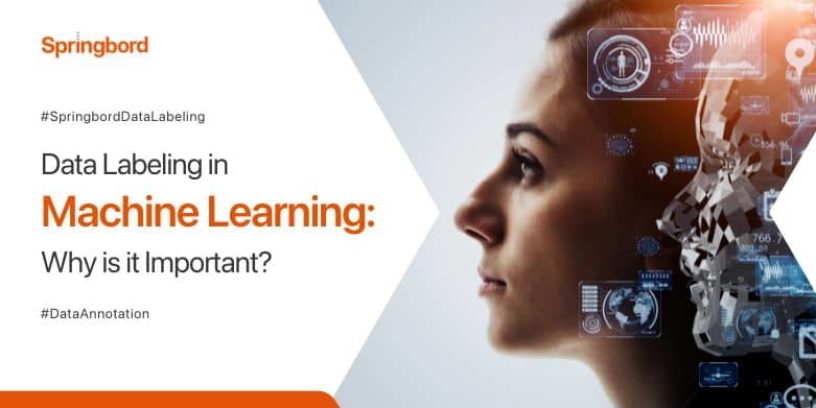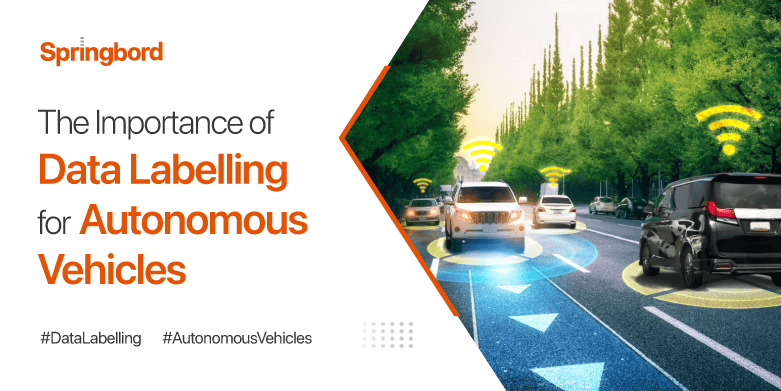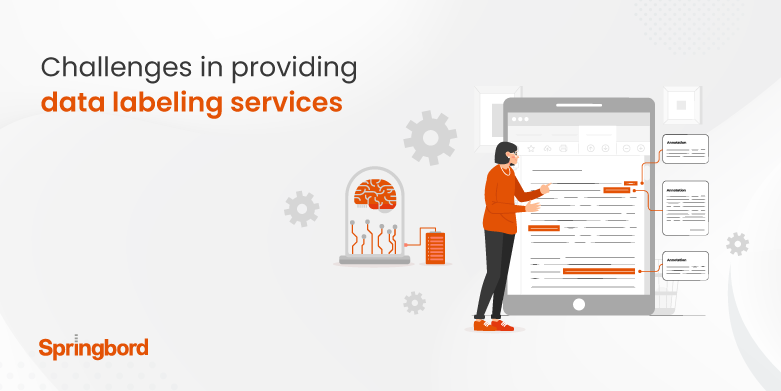 Read time 3 min
Read time 3 minIn recent years, machine learning has gained popularity as a tool for automating various tasks. However, for machine learning algorithms to work effectively, they need to be trained on labeled data.
Data labeling in machine learning involves the process of assigning relevant tags or annotations to a dataset, which helps the algorithm to learn and make accurate predictions.
In this blog post, we will explore data labeling in machine learning and how it impacts the overall performance of machine learning models. We will also discuss how Springbord can help businesses with their data labeling needs.
What is Data Labeling in Machine Learning?
Data labeling in machine learning is the process of assigning labels or tags to a dataset. These labels or tags can be in the form of text, images, or any other relevant form of data that is used to train machine learning models.
The purpose of data labeling is to help machine learning algorithms to learn from the labeled data and make accurate predictions. For example, if you want to train a machine learning model to identify images of dogs, you need to label the images as “dog” and “not dog.”
Types of Data Labeling
There are different types of data labeling techniques used in machine learning. Some of the common techniques are:
- Supervised Learning: In supervised learning, the machine learning model is trained on a labeled dataset. The labels are provided by humans, and the machine learning algorithm learns to predict the output based on the input data and the associated labels.
- Unsupervised Learning: In unsupervised learning, the machine learning model is trained on an unlabeled dataset. The algorithm tries to find patterns in the data without any prior knowledge of the labels.
- Semi-Supervised Learning: Semi-supervised learning involves both supervised and unsupervised learning. The machine learning model is trained on a partially labeled dataset, where only some of the data is labeled.
How does data labeling work?
Data labeling can be done manually or automatically. Manual data labeling involves humans annotating the data, which can be time-consuming and expensive. However, it ensures accurate labeling and is often necessary for complex tasks such as medical diagnosis or object detection.
On the other hand, automatic data labeling uses algorithms to assign labels to the data, which is faster and less expensive but can be less accurate.
Why is Data Labeling Important in Machine Learning?
The importance of data labeling in machine learning can be summed up by the fact that it enables algorithms to learn from labeled data and make precise predictions. Without labeled data, machine learning models cannot learn the patterns in the data, and their predictions will be inaccurate.
Data labeling also helps to improve the accuracy of machine learning models over time. As more data is labeled, the model can learn from the new data and improve its predictions.
How Does Springbord Help with Data Labeling?
Springbord provides a wide range of data labeling services, including image annotation, text annotation, and video annotation. Springbord has a team of experienced data labelers who can provide accurate and high-quality labels for your datasets.
We use a combination of manual and automated data labeling techniques to ensure the accuracy and quality of the labeled data. They use advanced tools and technologies to automate the labeling process wherever possible, but they also have a team of trained data labelers who can provide manual labeling when necessary.
Our data labeling services are flexible and scalable, allowing businesses to label as much data as they need. They offer fast turnaround times and can handle large volumes of data labeling requests. They also provide customized data labeling solutions to meet the specific needs of their clients.
Conclusion
Data labeling is an essential component of machine learning. It involves the process of assigning relevant tags or annotations to a dataset, which helps machine learning algorithms learn and make accurate predictions.
Data labeling is critical because it helps algorithms learn from the labeled data and improve their accuracy over time.
Springbord can assist businesses with their data labeling requirements. Our data labeling services are adaptable and scalable, and we always do our best to meet the needs of our customers.






